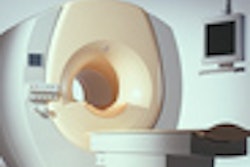When it comes to purchasing new MRI equipment, two theorems hold true, according to Dr. Lawrence Muroff, a clinical professor of radiology at the University of Florida in Tampa.
"When you are in the buying mode, companies listen to whatever you have to say. They ask your opinion on everything: ‘How are we going to solve the Northern Ireland crisis? How do you think we can cure world hunger? What do you think about buying our magnet?’" Muroff told attendees at the recent Clinical Magnetic Resonance Society meeting in San Francisco.
"However, once you’ve purchased the machine, you quickly revert to the same boring person you were before the whole process began," he said.
While they have the vendor’s rapt attention, those with equipment purchasing power should gather up as much information as possible before signing the check. Muroff posited that the cornerstone to the purchasing process is a site visit, which can reveal valuable information on how well the scanner measures up in the real world.
"I’ve never bought a piece of equipment based on a site visit," Muroff said. "But I’ve not bought millions of dollars worth of equipment based on a site visit. Having a patient under the machine is a lot different than having a phantom. It’s very important to make sure that the piece of equipment not only works, but that it works under the clinical conditions in your institution."
Muroff, who also is a professor at the University of Southern Florida College of Medicine, outlined steps he said are vital for a successful site visit, including a list of questions to take along.
If possible, skip the company’s beta site testing center and spend a full day at an institution comparable to your own in size, patient load, and scope, Muroff said. Beta sites tend to have the most ideal conditions rather than the most realistic.
"Beta sites invariably have engineers, fellows, scientists, and [radiologic] technologists who are all devoted to that site. Back home, I may just have one physician and one technologist."
Second, Muroff recommended that physicians and technologists go on the site visit together. Hospital or practice administrators may be hesitant to let two people go for a full day, but Muroff called it "the best investment you’ll ever make." Not only does the visit allow the technologist to see how the equipment works, but it also gives him or her the opportunity to talk honestly about the equipment with the technologists at the site, he said.
Another issue is not just how the equipment works, but how the patients interact with the equipment, and how it fits into the site’s surroundings.
"You should be able to see patients in the scanner, get scanned, and then come off. Understanding those logistics and the time it takes to do a study is critically important," he added.
One particular site Muroff visited had an MR scanner designed to blend in with one wall in the study room. While it was aesthetically pleasing, "some patients refused to enter the scanner because they thought it resembled a burial crypt," he said.
Five basic questions that should be asked of the vendor representative during the visit include:
What is the cost of the service contract?
Keep in mind that service fees can escalate the price of the equipment, Muroff said.
What is the response time for repair service?
As the buyer, define a response time that will minimize unscheduled down time. Also, ask about the location and availability of repair technicians and replacement parts.
How frequent are system upgrades?
"One thing people forget to ask is ‘How long does it take to install a system upgrade?’ There are some software upgrades that can shut down your machine," Muroff said.
What is the training program for physicians and technologists?
The company should specify where training takes place, how long it takes and who pays for it, including expenses such as transportation, food, and lodging if the training is not on site.
How many patients does it take to break even under your reimbursement scheme?
"It’s important to know the daily throughput that has been achieved versus that which was projected," Muroff said.
Finally, Muroff recommend that all requests, questions, and agreements be made prior to the sale in writing, no matter how amiable the relationship between buyer and seller.
"It’s extremely important to have a paper trail," he said. "This is nothing (against) the ethical construct of any of the companies. Most companies and their representatives are highly ethical and highly motivated. They want to do good things for you. But (company representatives) get transferred or promoted or retire. The promises that they make to you verbally, there’s no record of them, so there’s no way to get those promises fulfilled."
By Shalmali PalAuntMinnie.com staff writer
July 31, 2000
Let AuntMinnie.com know what you think about this story.
Copyright © 2000 AuntMinnie.com



















